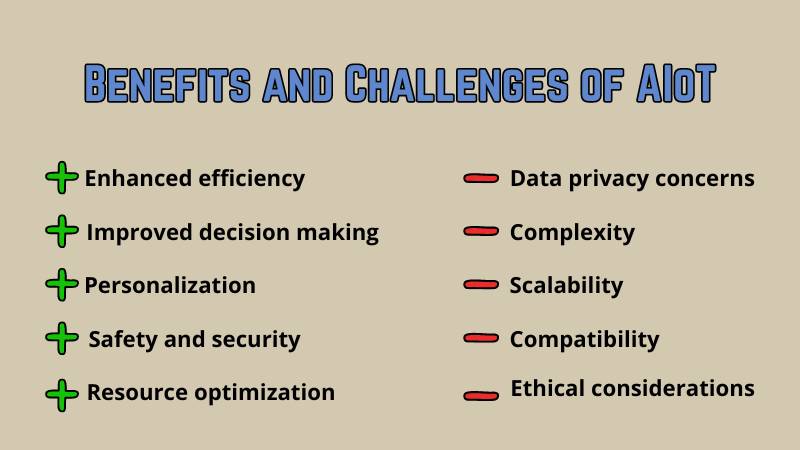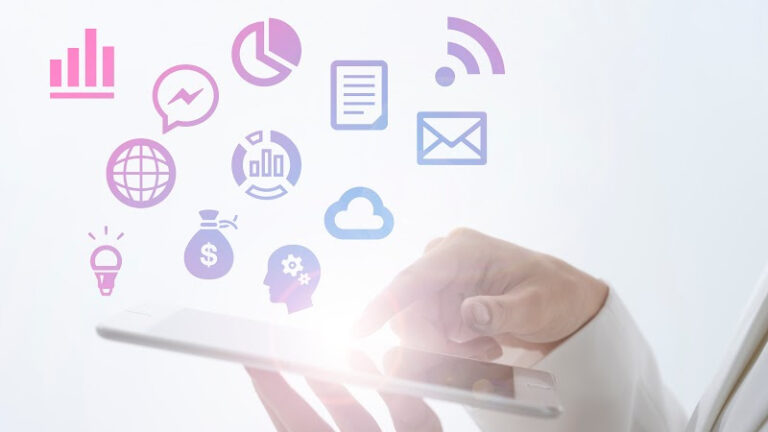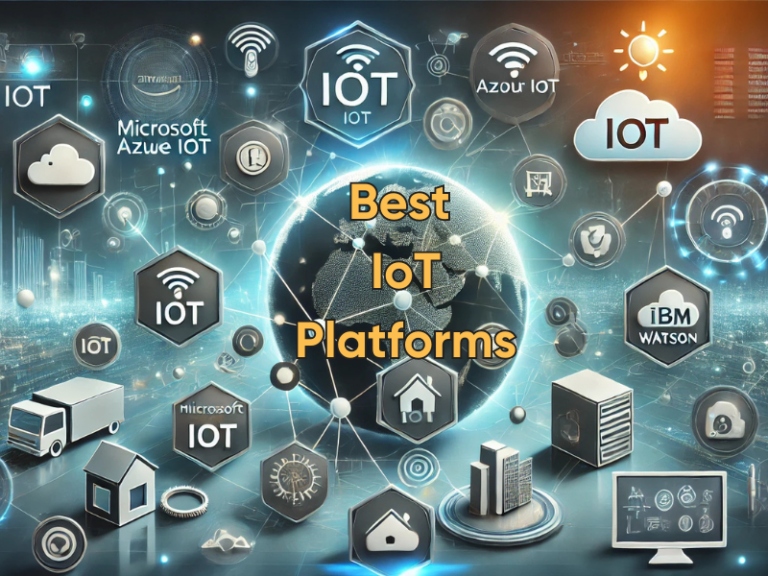What is AIoT?
AIoT, or Artificial Intelligence of Things, is the integration of artificial intelligence (AI) technologies into the Internet of Things (IoT) ecosystem. In this article we explore more, what AIoT is, how it works, and other facts.
Understanding AI in IoT
Imagine your home filled with devices like smart thermostats, lights, and security cameras. Now, think about these devices getting smarter, almost like they have brains. That’s where AI in Internet of Things (AI in IoT) comes in.
What Does It Mean?
AI in IoT, or Artificial Intelligence in the Internet of Things, is like adding brains to all those connected devices. It’s about making them smarter, so they can do things on their own without needing you to tell them what to do.
How Does It Work?
Here’s the simple version – AI helps these devices learn from the information they gather. They can figure out patterns, make predictions, and even make decisions without you having to do anything.
Why Does It Matter?
Well, imagine your smart thermostat knowing when you’re coming home and adjusting the temperature to your liking automatically.
Or your security camera recognizing familiar faces and alerting you only when something unusual happens. That’s the magic of AI in IoT—it makes your devices work better for you
How does AIoT work?
AIoT operates at the intersection of artificial intelligence (AI) and the Internet of Things (IoT), creating intelligent systems out of interconnected devices. Here’s how it works:

- Data Collection. In the case of AIoT, IoT devices collect large amounts of data from the environment around them, such as sensor readings, user interactions and environmental factors.
- Data Processing. AI systems in these devices or on the internet check the data as it comes, spotting trends, unusual changes, and links.
- Decision Making. AIoT systems automatically make decisions, change device settings, predict what might happen next, or start actions to improve how well they work.
- Feedback Loop. Continuous learning is important in AIoT. It means that the system learns from its results to make its predictions better and smarter over time.
- Integration. AIoT solutions mix AI technologies such as machine learning, deep learning, and natural language processing with IoT devices, helping them learn and improve over time.
AIoT uses artificial intelligence to make IoT devices smarter, more responsive, and more effective in addressing user needs and optimizing operations. Combining AI and IoT, AIoT systems are opening the way to a more connected, efficient, and smarter future.
Benefits and Challenges of AIoT
Benefits
- Enhanced Efficiency. AIoT optimizes processes, predicts failures, and automates tasks, increasing operational efficiency and reducing downtime.
- Improved Decision Making. AIoT systems use a lot of information from right now to help businesses make smart choices and change their plans when things are always changing.
- Personalization. AIoT enables personalized user experiences by understanding preferences and behavior patterns, resulting in tailored services and products.
- Safety and Security. Using AI-based threat detection and anomaly detection, AIoT strengthens cybersecurity measures, protecting sensitive data and critical infrastructure.
- Resource Optimization. AIoT optimizes resource utilization, energy consumption, and supply chain management, contributing to sustainability efforts and cost savings.

Challenges
- Data Privacy Concerns. Integrating AI with IoT raises concerns about data privacy, as interconnected devices collect and process vast amounts of personal information.
- Complexity. Implementing AIoT solutions requires expertise in both AI and IoT technologies, posing challenges in system integration, deployment, and maintenance.
- Scalability. Scaling up AIoT systems to cope with growing data volumes and device ecosystems requires reliable infrastructure and scalable algorithms.
- Compatibility. Making sure different smart gadgets and computer brains can talk to each other easily is super important, but it’s really tough to do.
- Ethical Considerations. AIoT systems should follow ethical rules, addressing unfair algorithms, transparency, and accountability.
Examples of AIoT
AIoT is changing many industries by making things automatic, smarter, and more connected.
Here are some examples:
- Smart Home Systems. AIoT powers smart home devices like thermostats, lighting systems, and security cameras to learn user preferences, adjust settings autonomously, and provide personalized experiences for residents.
- Healthcare Monitoring. Wearable devices equipped with AIoT capabilities monitor vital signs, detect anomalies, and provide real-time health insights, enabling remote patient monitoring and personalized healthcare interventions.
- Industrial Predictive Maintenance. AIoT solutions analyze data from industrial machinery sensors to predict equipment failures, schedule maintenance proactively, and optimize production processes to minimize downtime and maximize efficiency.
- Autonomous Vehicles. These technologies enable autonomous vehicles to perceive their surroundings, make real-time decisions based on traffic conditions, and communicate with other vehicles and infrastructure, enhancing safety and efficiency on the roads.
- Smart Cities. IoT AI transforms cities into intelligent ecosystems by integrating sensors, cameras, and other IoT devices with AI-driven analytics to manage traffic flow, enhance public safety, optimize energy usage, and improve overall urban livability. More about it can be read in the article Smart Cities and IoT.
- Retail Analytics. Artificial Intelligence of Things systems analyze retail stores’ behavior, foot traffic patterns, and inventory levels to optimize product placement, enhance customer experiences through personalized recommendations, and streamline inventory management processes.
- Precision Agriculture.These solutions in agriculture leverage sensor data, satellite imagery, and AI algorithms to monitor crop health, optimize irrigation schedules, and predict yields, enabling farmers to make data-driven decisions and maximize crop productivity.
- Energy Management. AIoT technologies monitor energy consumption patterns, analyze building data, and optimize HVAC systems and lighting usage in commercial buildings to reduce energy waste, lower costs, and improve sustainability.
Conclusion
As smart devices get smarter with AIoT (Artificial Intelligence of Things) tech, we see AI blending more deeply into our regular stuff, like thermostats, wearables, machines at work, and self-driving cars.
When artificial intelligence and the Internet of Things come together, they can change how we use technology a lot. It can make things simpler, work better, and connect everything in our lives more than ever.
When you hear about AIoT, don’t just think about smart devices. It means making the world smarter and more intelligent. AIoT can change the way we do things and communicate with the world. Get ready for this big change!
FAQ
What is AIoT❓
AIoT stands for AI in Internet of Things. It’s when smart devices like wearables or home gadgets use AI to do things like analyzing data and making decisions.
How does AI help in IoT❓
AI in IoT means using artificial intelligence to make smart gadgets even smarter. It helps them learn, adapt, and make decisions based on the data they collect.
What's AIoT meaning❓
AIoT stands for Artificial Intelligence of Things. It’s about merging AI with IoT to create intelligent and efficient systems.
How does AI improve IoT devices❓
AI for IoT makes devices better at understanding and responding to data. It helps them predict problems, automate tasks, and provide personalized services.
What's the role of AI in the Internet of Things❓
AI plays a big role in the IoT by adding intelligence to connected devices. It helps them analyze data, make decisions, and interact with users more effectively.





